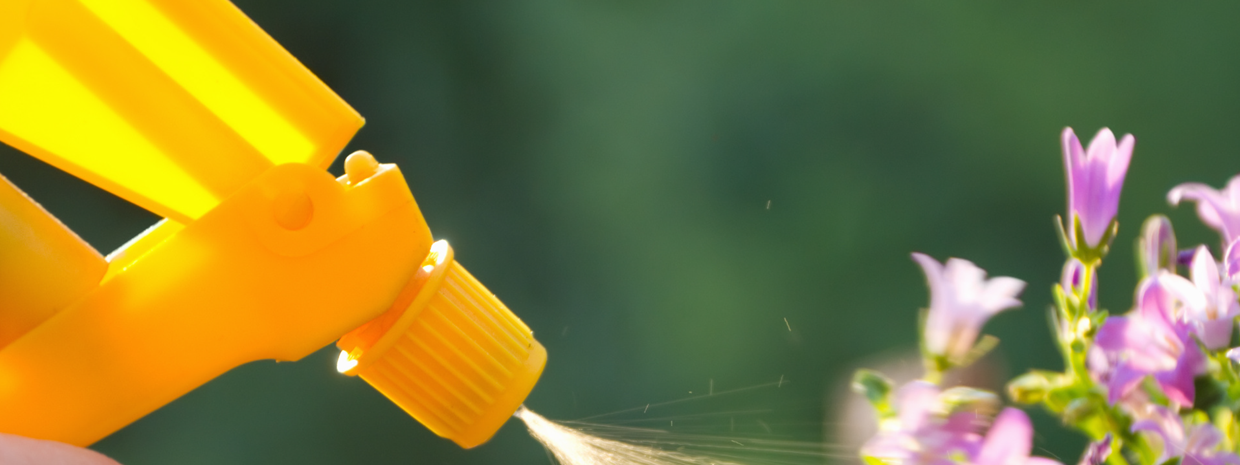You know how athletes need more than just water to perform at their best? They drink sports drinks like Gatorade or Liquid IV to get the electrolytes and nutrients they need to push harder, run faster, and keep going longer. Well, plants are kind of like athletes. They need more than just water to stay strong, vibrant, and ready to take on the world. That's where plant nutrition and fertilizer come in.
This guide will break it down, so you know exactly how to help your plants win—whether they're chilling in your bedroom, on your balcony, or in the backyard.
The “Fuel” Plants Need: Nutrients
Plants have their own version of Gatorade, but instead of electrolytes, they need nutrients to grow big, stay green, and fight off stress. Let’s call it their "power fuel." Just like how we need proteins, carbs, and fats, plants need macronutrients to survive:
The Big Three (NPK):
-
Nitrogen (N): This is the boost for green growth—think of it like the energy bar plants need to grow lush leaves and stems. Without it, plants look tired and yellow.
-
Phosphorus (P): If you want strong roots and lots of flowers or fruits, this is the go-to nutrient. It helps plants get rooted and supports them as they bloom.
-
Potassium (K): It’s the plant version of a bodyguard, helping them stay healthy, fight off stress, and build a strong immune system to deal with bad weather or pests.
Secondary Nutrients (The Extra Push):
- Calcium (Ca): Think of it like the bones in your body. It strengthens plants and keeps them from being weak or floppy.
- Magnesium (Mg): It’s all about energy—helping plants turn sunlight into food through photosynthesis.
- Sulfur (S): Plants need this to grow proteins and vitamins. It’s like adding a little more muscle to their diet.
Micronutrients (The Hidden Heroes):
These are needed in small amounts but pack a punch in keeping plants healthy:
- Iron (Fe) helps plants make food from sunlight.
- Zinc (Zn) helps plants grow and develop properly.
Just like an athlete needs to stay fueled, your plants can’t thrive without these nutrients!
Why Do Plants Need Fertilizer?
Let’s imagine your plants are in training—like an athlete getting ready for a big game. Over time, their "training ground" (the soil) gets tired and worn out. Nutrients get used up, and if you don’t replace them, your plants won’t perform their best.
That’s where fertilizer comes in—it’s like a recharge for your plant’s soil. Fertilizers provide all the nutrients plants need to bounce back and thrive. Without it, plants are running on empty.
The NPK Game Plan
Ever see a fertilizer bag that says something like 10-10-10 or 5-10-5? That’s the NPK ratio, which stands for Nitrogen (N), Phosphorus (P), and Potassium (K). These numbers tell you how much of each nutrient is packed inside, so you know exactly what your plants are getting.
Here’s how to think about it:
- High Nitrogen (N) fertilizers (like 30-10-10) = Leafy, green growth for lawns and leafy houseplants.
- High Phosphorus (P) fertilizers (like 5-30-5) = Big blooms and lots of fruit for flowering plants.
- Balanced Fertilizers (like 10-10-10) = Great for overall growth when you’re not sure what your plants need.
Fertilizers are like customized training for your plants—if they need more strength, give them calcium; if they need better endurance, give them potassium. It’s all about giving them the right support at the right time.
Soil pH: The Secret to Success
Even with all the right nutrients, if the soil’s pH is off, your plants won’t be able to absorb them. Most plants prefer soil that’s slightly acidic (around a 6.0 to 7.0 pH), which is like keeping the perfect balance for their training environment. Make sure to check your soil’s pH so your plants get the most out of their “fuel.”
When and How to Fertilize
Timing matters. Just like athletes need to refuel before and after their workouts, plants need fertilizing during their growing season—usually in the spring and summer when they’re putting out the most growth.
Your Fertilizer Playbook:
- Seedlings and Young Plants: Use a balanced fertilizer (or one slightly higher in phosphorus) to help them build strong roots.
- Mature Plants: Adjust based on what they’re focusing on—green growth, flowers, or fruit. For veggies or flowers, up the phosphorus to help them bloom.
The Common Deficiencies (and How to Fix Them)
Sometimes, plants will show you exactly what they need, like an athlete who’s feeling weak or off their game.
- Nitrogen Deficiency: Yellow leaves, stunted growth. Fix it with nitrogen-rich fertilizers like blood meal or compost.
- Phosphorus Deficiency: Dark green or purplish leaves. Try bone meal or a high-phosphorus fertilizer.
- Potassium Deficiency: Brown edges on leaves and slow growth. Use potash to restore balance.
Closing Thoughts: Fuel Your Plants for Success
Just like athletes need the right fuel to win, plants need a solid nutrition plan to thrive. With the right fertilizer, you’re giving them everything they need to succeed—whether it’s growing stronger, putting out flowers, or staying healthy. Remember, it’s not just about watering your plants; it’s about giving them the boost they need to reach their full potential.
So, take charge of your plant care routine like a pro coach and make sure your plants get the nutrients they need. With the right fertilizer game plan, you’ll have a winning garden in no time!




